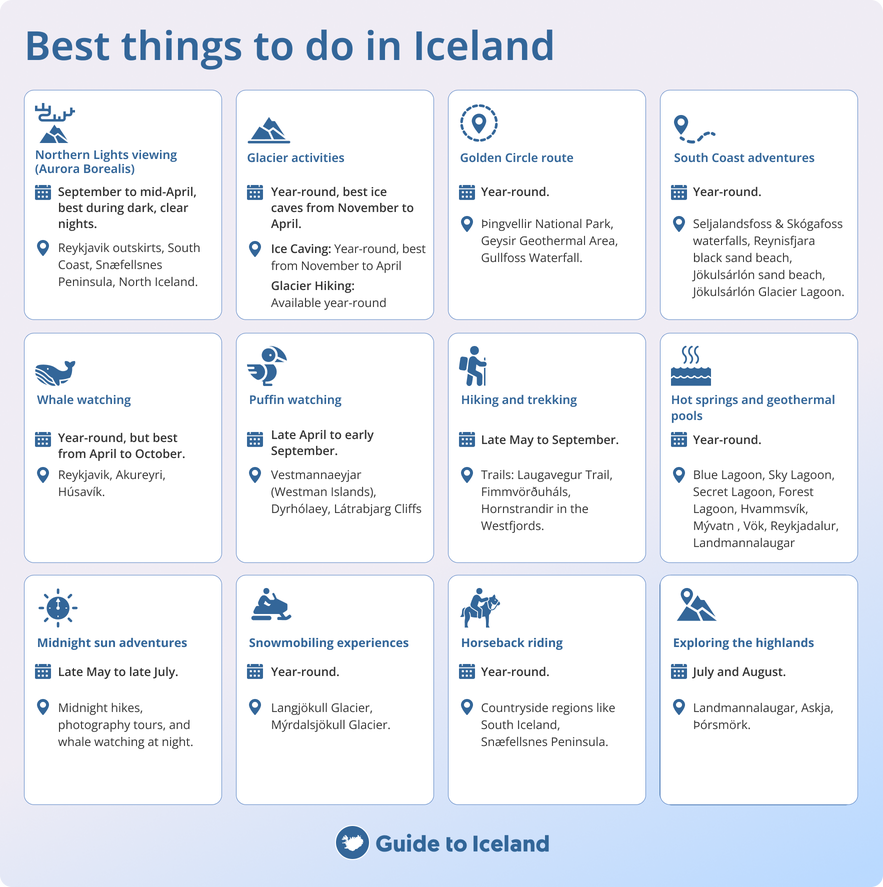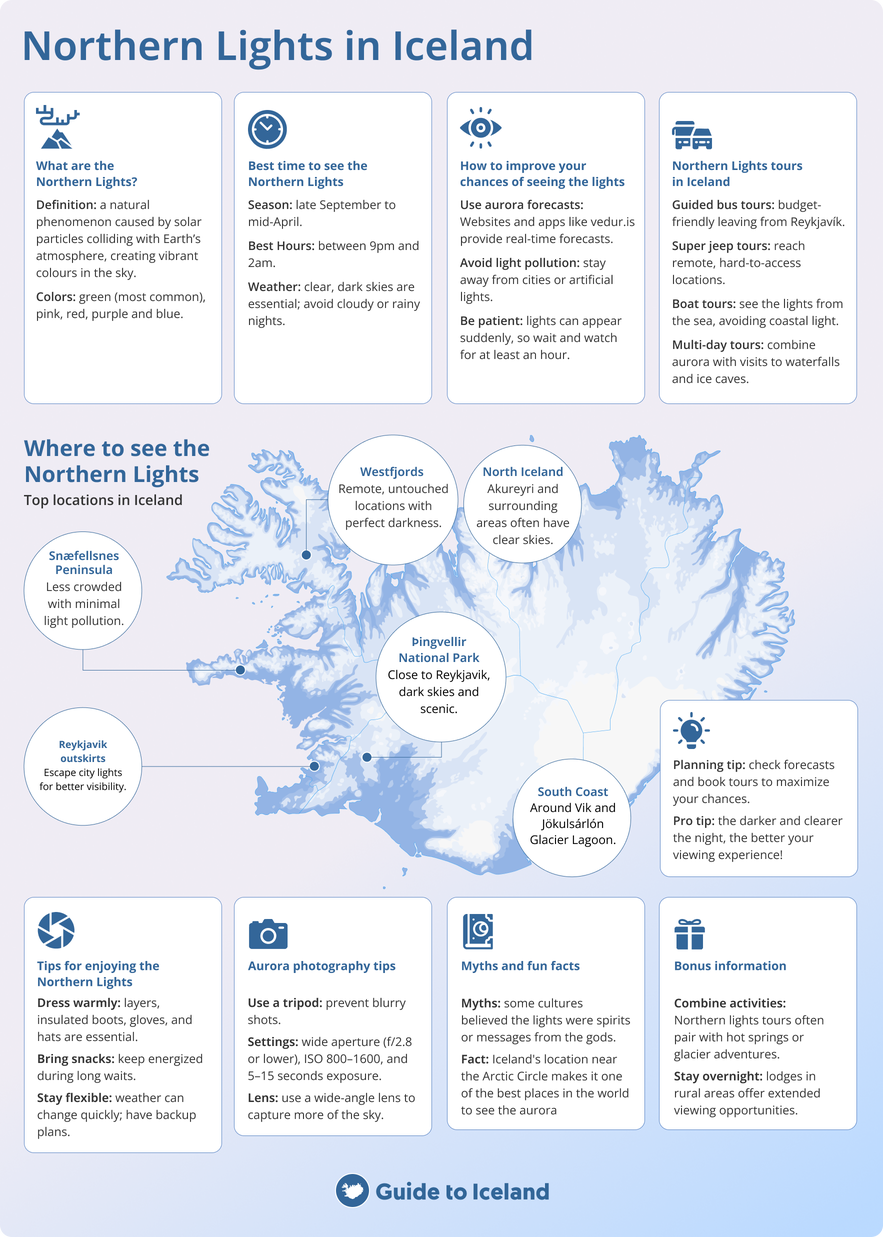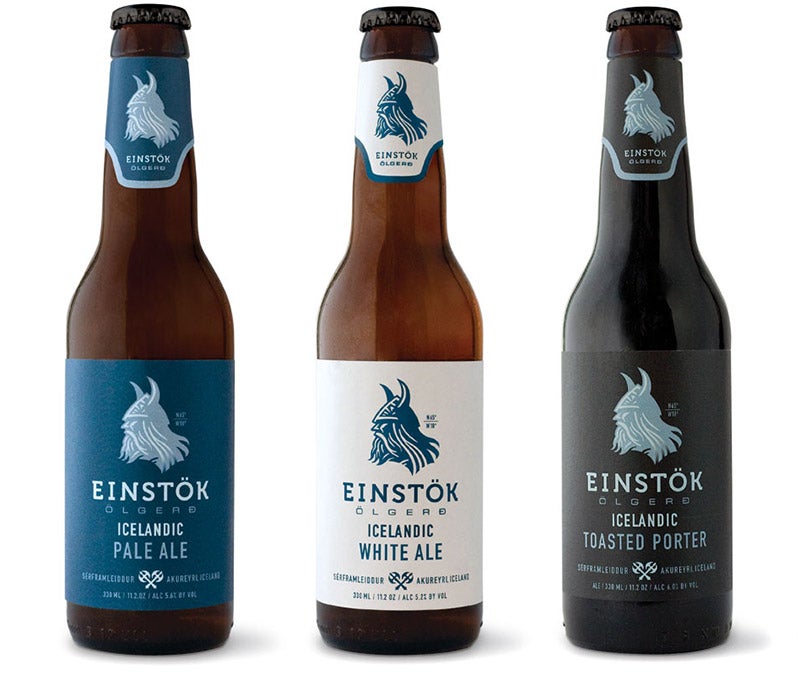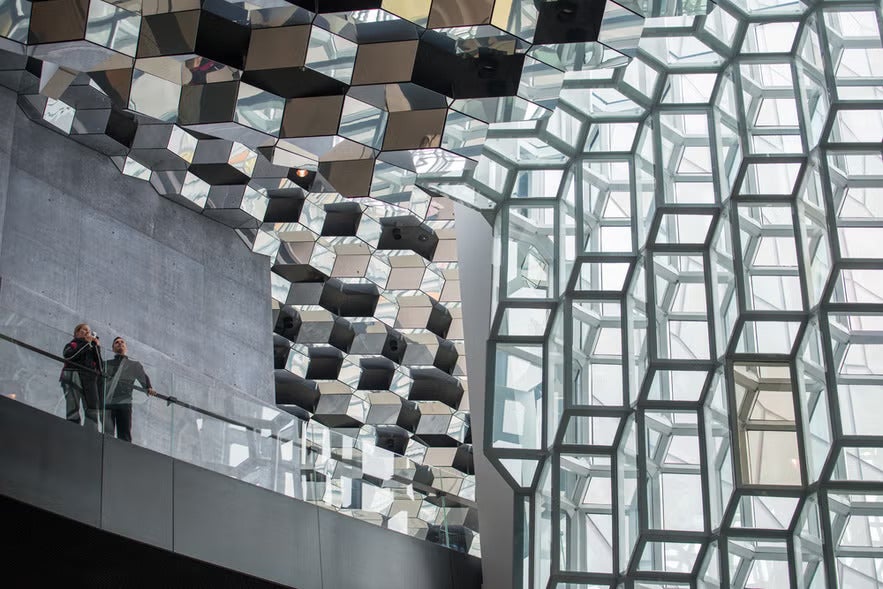Find out everything you need to know about all the top activities in Iceland. Explore the fun things you can do and places you should visit in Iceland to make your trip to Iceland truly unforgettable.
In this guide, we will uncover all the top activities you can engage in while visiting Iceland. You’ll find that time and budget will be the biggest limitations when planning your trip rather than the things you want to do. Iceland is a dream destination for travelers seeking adventure and breathtaking natural beauty, so the activities on this list will reflect that.
Why You Can Trust Our Content
Guide to Iceland is the most trusted travel platform in Iceland, helping millions of visitors each year. All our content is written and reviewed by local experts who are deeply familiar with Iceland. You can count on us for accurate, up-to-date, and trustworthy travel advice.
Of course, while visiting Iceland, you will have a limited time, and it's unrealistic (or impossible!) to do everything in one trip. Therefore, it's advisable to book tours in Iceland ahead of time to make sure there's availability, and it allows you to plan your trip before your arrival.
A great way to travel in Iceland is by renting a car or booking a self-drive tour. This way, you can drive to all the places you want to see and try the experiences you like the most. It's also easy to find a place to stay on the largest selection of accommodations in Iceland, with anything from remote cottages to luxury hotels.
But even if you give yourself plenty of time while visiting Iceland, there's always something that you'll have to leave undone, so it's all about picking and choosing. Because we cooperate with nearly all travel service providers in the country, Guide to Iceland is in a prime position to help you choose the best things to see and do in Iceland. Here are the top 12 best activities in Iceland!
- Read also the Top Things To Do & Places to Visit In Iceland
12. Go Whale Watching
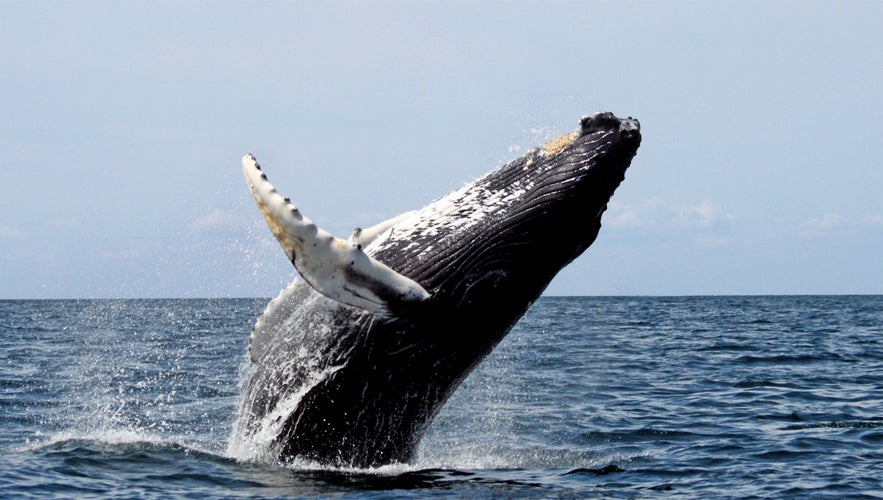 Whale watching is one of the best and simplest activities to do in Iceland. Over twenty species of whales, dolphins, and porpoises call the Icelandic coastal waters home, ranging from the small harbor porpoises to the earth’s largest animals, blue whales. The accessibility of whale-watching makes it easy to squeeze in a busy itinerary, as you can go whale-watching from the downtown area of Reykjavik.
Whale watching is one of the best and simplest activities to do in Iceland. Over twenty species of whales, dolphins, and porpoises call the Icelandic coastal waters home, ranging from the small harbor porpoises to the earth’s largest animals, blue whales. The accessibility of whale-watching makes it easy to squeeze in a busy itinerary, as you can go whale-watching from the downtown area of Reykjavik.
Minke whales and humpback whales are the most common species to see. There’s also a possibility of seeing rarer animals, such as killer whales and fin whales. While the whales are the star of the show, during a whale-watching tour, you can also spot various birds that reside in Iceland, such as skuas, terns, guillemots, and even the colorful puffin.
Whale-watching tours depart from three primary locations: Reykjavik, Akureyri, and Husavik. Husavik is considered the 'whale-watching capital of Europe' due to the abundant animal traffic that passes through its fjords. This activity results from fertile feeding grounds found off Iceland’s northern coasts.
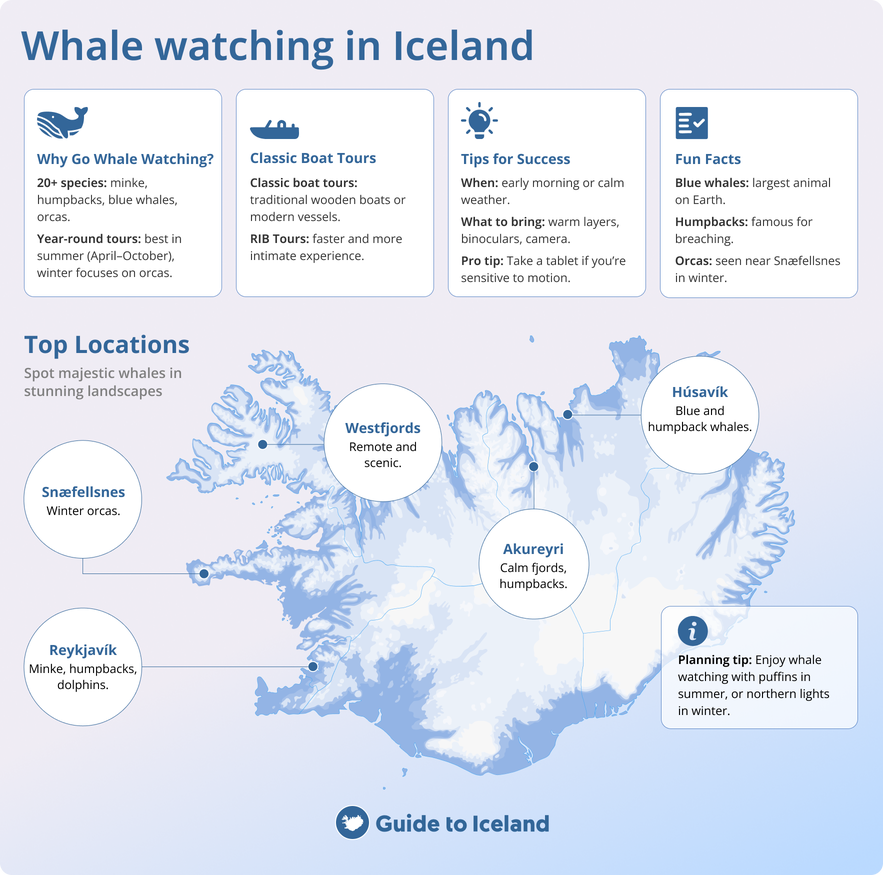
Bigger boats are perfect for larger tour groups. They have reliable tracking technology, so they’re quite reliable for finding whales.
On the other hand, smaller boats mean smaller groups and a more intimate setting. Powerboats can also get closer to the animals themselves as their motors make less noise.
- Read more: The Best Guide to Whale Watching in Iceland
11. Go Horseback Riding
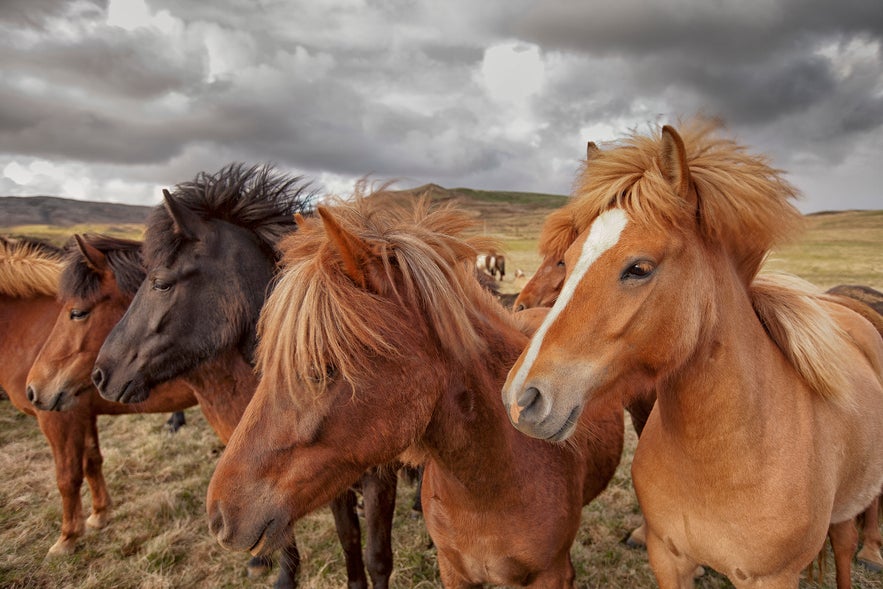 The Icelandic horse is arguably the country’s most famous four-legged resident. Instantly recognizable for its diminutive stature, short legs, and muscular build, this isolated breed is famed for its reliability, resistance to harsh natural elements, and for having not four, but five gaits.
The Icelandic horse is arguably the country’s most famous four-legged resident. Instantly recognizable for its diminutive stature, short legs, and muscular build, this isolated breed is famed for its reliability, resistance to harsh natural elements, and for having not four, but five gaits.
Despite their smaller and sturdy stature, they are always referred to as horses, and you might get funny looks calling them ponies to Icelanders!
The Icelandic horse is such a unique breed that breeding them with other horses is prohibited in Iceland, and when a horse leaves the country, it can never return.
One of the most fun activities to do while visiting is to go on Icelandic horse riding tours, allowing you to get to know this friendly animal while exploring the nature of Iceland. Traveling by horseback has been a popular way of seeing Iceland for centuries, during which time the original breed arrived from Scandinavia and eventually evolved into the animal we know and love today. It’s also an activity in Iceland that's for visitors of all ages!
Knowledgeable and certified instructors lead horseback riding tours for both beginners and experienced riders. Most horse riding tours in Iceland last for approximately one to four hours (though there are options to extend this) and will offer the chance for a quick trot for those who feel confident in the saddle.
You can ride the Icelandic horse in various places around the country with stunning landscapes, such on this horse riding tour on a black sand beach which starts from the town of Vik in South Iceland, or you can ride through lava fields on an Icelandic horse for a totally different experience.
- Read more: The Icelandic Horse - A Comprehensive Guide
10. Have a Night Out in Reykjavik
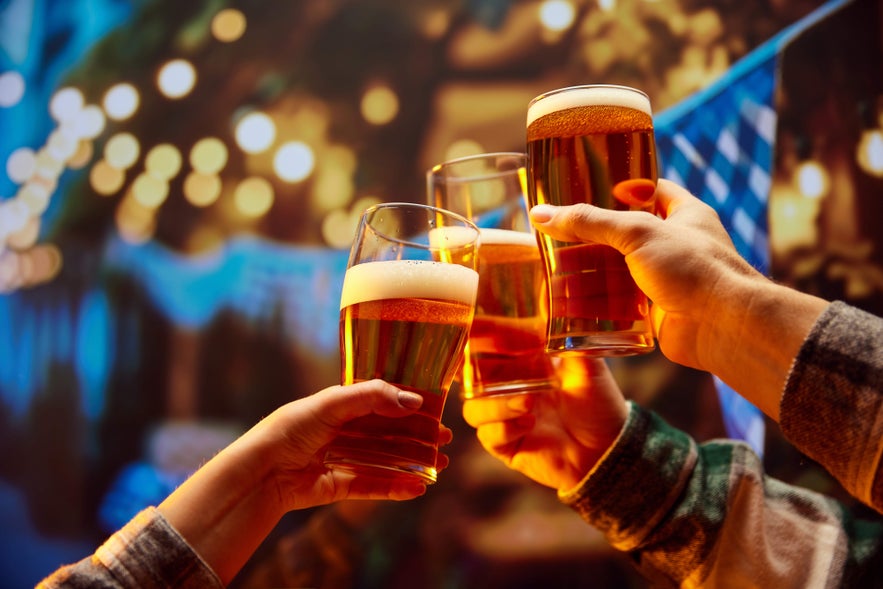
What is there to do in Iceland at night? Going out at night is undoubtedly a favorite amongst locals, who will jump at the chance to enjoy a few cold ones before the night’s end. We can’t be sure whether this has anything to do with beer only being legalized in 1989 or perhaps the eternal darkness that blankets the country each year.
Downtown Reykjavik is awash with bars, coffee houses, restaurants, and social events. The vast majority of them will see a decent blend of local Icelanders and outside visitors, thus ensuring a night of exciting conversation. There’s a reason why going out at night is one of the popular things to do in Reykjavik!
To alleviate any stress put on your wallet, most establishments have happy hour (a time when drinks are offered at a discount) for at least three hours. However, customers of Guide to Iceland have exclusive access to our VIP Club, giving them great discounts and special offers on drinks at various bars and pubs in downtown Reykjavik.
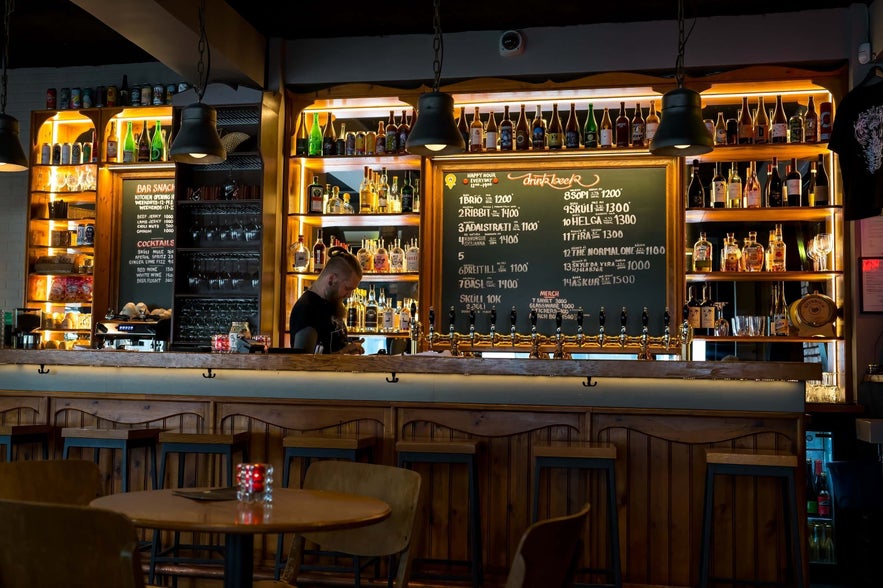 As with most places worldwide, the longer the night goes on, the more rowdy downtown Reykjavik’s general atmosphere will become. Some bars don't close until around 3-4 AM. During the summer, it's always an interesting experience stepping out of a dim-lit bar and realizing it's as bright as day outside, despite it being the middle of the night.
As with most places worldwide, the longer the night goes on, the more rowdy downtown Reykjavik’s general atmosphere will become. Some bars don't close until around 3-4 AM. During the summer, it's always an interesting experience stepping out of a dim-lit bar and realizing it's as bright as day outside, despite it being the middle of the night.
Thankfully, most hotels and guesthouses are within walking distance, so it’s only a short stumble back to your hotel after the party ends.
- See also: Nightlife in Iceland
9. Relax in the Blue Lagoon Spa
The Blue Lagoon is one of the most visited places in Iceland, for valid reasons. It has become world-famous in recent years because of its unique relaxing atmosphere and beautiful surroundings. The geothermal spa is well known for its healing silica mud, which can be applied to the face while staying there.
Its convenient location near the airport also helps make it easy to slip into a busy itinerary, so there's no reason to miss out while staying in Iceland.
Even visitors who only have a limited time in Iceland, such as a long layover, can take a quick Blue Lagoon tour or the shuttle bus to the Blue Lagoon.
If you'd prefer to stay in the capital region, you can visit the beautiful Sky Lagoon, located just a 10-minute drive from the city center. You can easily book admission to the Sky Lagoon and enjoy their iconic 7-step spa ritual and amazing views of the nearby fjord from their infinity pool.
- See also: The Ultimate Guide to the Blue Lagoon
- Learn the difference: Blue Lagoon vs. Sky Lagoon: Which One Should You Visit?
8. Go Dog Sledding Across the Snow
Going dog sledding in Iceland is a one-of-a-kind experience that lets you enjoy the excitement of zooming across snowy white landscapes.
It's a fun activity for all ages, and kids as young as 2 years old can go on the dog sleds. You also get plenty of time to fuss over the adorable huskies amidst traveling in a beautiful landscape in style.
If you're staying in the capital, it's easy to book a dog sledding tour near Reykjavik where you can meet the dogs on location and hop on a sled for a joy ride! It's even available when there isn't snow on the ground, as the dogs love riding across dry land too!
If you're staying in North Iceland, you can also go for a dog sledding tour in the Myvatn Area and explore the beautiful region surrounding it. Of course, it's not all about riding on a sled, there is also plenty of time to say hi to the dogs and give them plenty of pats and cuddles!
Whether you’re joining a snowy adventure or a dry-land sled tour, going dog sledding in Iceland is a guaranteed fun time!
- Learn more: Dog Sledding in Iceland
7. Visit Dettifoss Waterfall in North Iceland
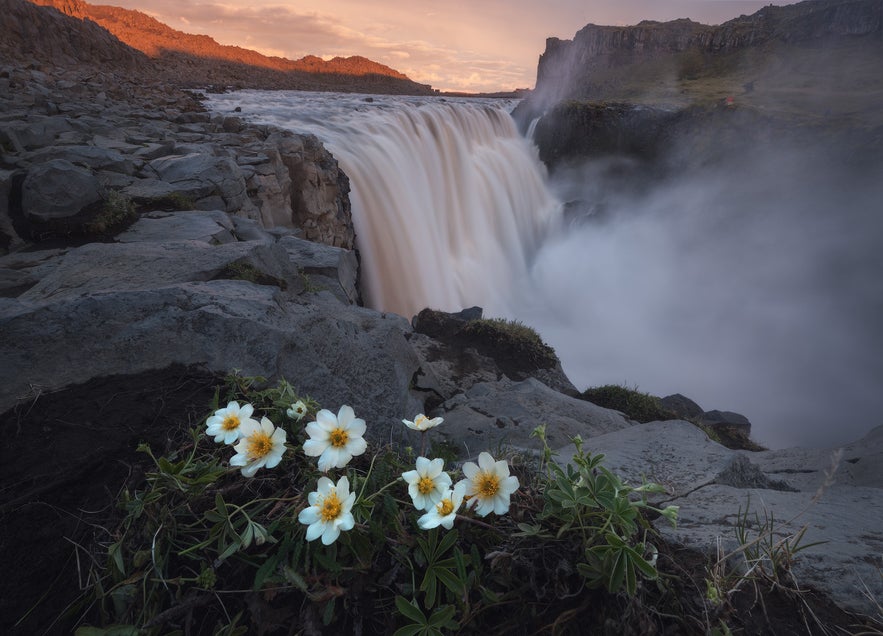
Dettifoss waterfall, found in Vatnajokull National Park in the Northeast of the country, is Europe’s second-most powerful waterfall and an Iceland must-see attraction. When making your list of where to go in Iceland, don’t forget this waterfall.
Falling 144 feet (44 meters) from the Jokulsa a Fjollum river, Dettifoss waterfall crescendos with a mighty crash into Jokulsargljufur Canyon below, creating one of the most spectacular and dramatic natural sites in the country. It was famously used in the opening scene of the sci-fi blockbuster Prometheus.
Dettifoss waterfall is accessible from Route 862 and is one of the main stops on Diamond Circle tours, the northern counterpart of the famed Golden Circle. Alongside Dettifoss waterfall, visitors to the Diamond Circle will also visit Husavik, Asbyrgi Canyon, and Lake Myvatn.
If you’re planning to visit this part of the country, be sure to check out other things to do in Husavik and things to do in Akureyri, both of which are in North Iceland.
- Read more: 11 Must-See Destinations in North Iceland
6. Go Hiking in the Beautiful Westfjords of Iceland
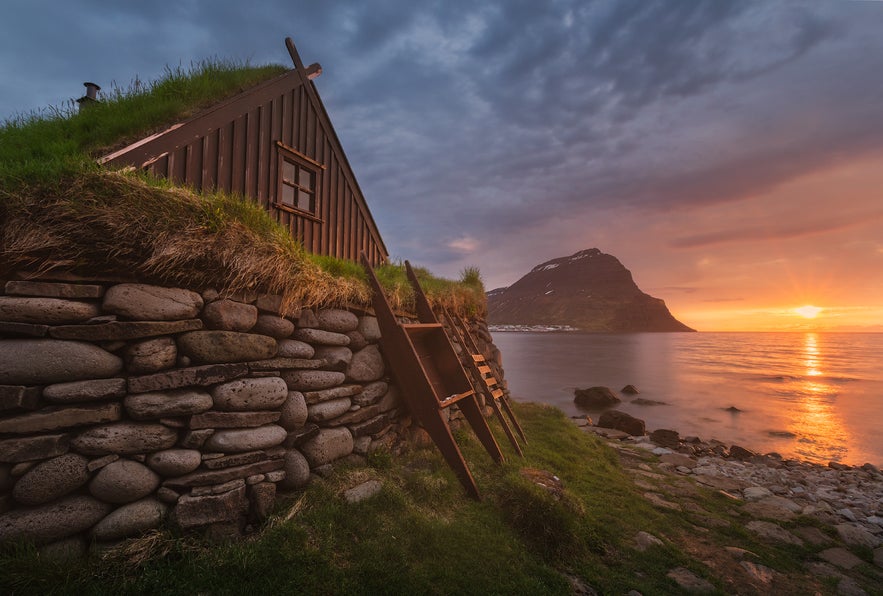 International guests tend to visit the Westfjords less often than the South, Southwest, and North because the famous Ring Road goes right past it. But that doesn’t mean it’s not a fantastic place to see. It makes it an even more attractive destination if you want to be away from large crowds.
International guests tend to visit the Westfjords less often than the South, Southwest, and North because the famous Ring Road goes right past it. But that doesn’t mean it’s not a fantastic place to see. It makes it an even more attractive destination if you want to be away from large crowds.
West Iceland attractions have a rich history steeped in folklore, mysticism, and magic. The Westfjords are as beautiful as they are culturally fascinating. From the towering bird cliffs of Hornstrandir to the tumbling Dynjandi waterfalls, the Westfjords have fun activities for everybody.
The Westfjords boasts the northernmost glacier in Iceland, Drangajokull glacier, the picturesque Arnarfjordur bay, the domineering Bolafjall mountain, and the puffin-rich island of Flatey. All of these and more make up the diverse and staggeringly beautiful landscapes of Northwest Iceland.

Some of the activities you can do in the Westfjords include kayaking in the fjords of Isafjordur, which is a beautiful and tranquil experience. For those wanting a thrilling experience, going on a scenic bike ride in the Westfjords is fun and will give an amazing view of the landscapes in the region. If you have an eye for the strange and unexplained, a visit to the Icelandic Sea Monster Museum is a lot of fun, but the overall top activity in the Westfjords is going hiking and sightseeing the beautiful natural wonders you will find there.
5. Sail on the Stunning Jokulsarlon Glacier Lagoon
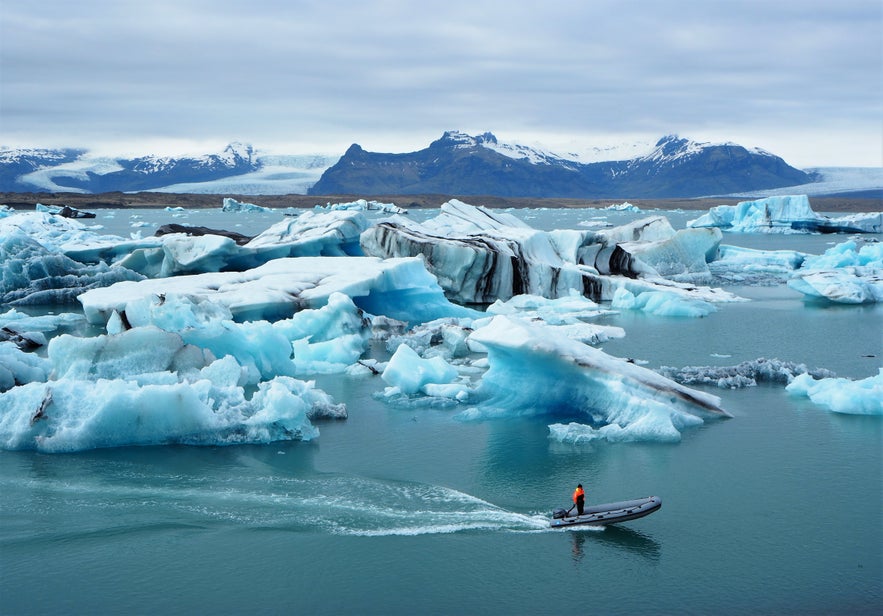 In a country full of unique natural wonders, it's hard to pinpoint the one that stands out above the others. However, any discussion about the greatest activities in Iceland simply must include visiting the Jokulsarlon Glacier Lagoon.
In a country full of unique natural wonders, it's hard to pinpoint the one that stands out above the others. However, any discussion about the greatest activities in Iceland simply must include visiting the Jokulsarlon Glacier Lagoon.
This glacier-filled lake should be near the top of your list of what to see in Iceland. Glittering icebergs groan and crunch against one another as they make their way from Breidamerkurjokull glacier to the Atlantic Ocean.
The best way to see this natural wonder up close is to go on a glacier lagoon zodiac boat tour or, for those who want to get even closer, kayaking at Jokulsarlon. However, those tours are only available in the summer. During the winter, visitors can observe the lagoon from the shoreline and watch as the playful seals that live in the area dip and dive around the chunks of ice in what may be the most beautiful places in Iceland.
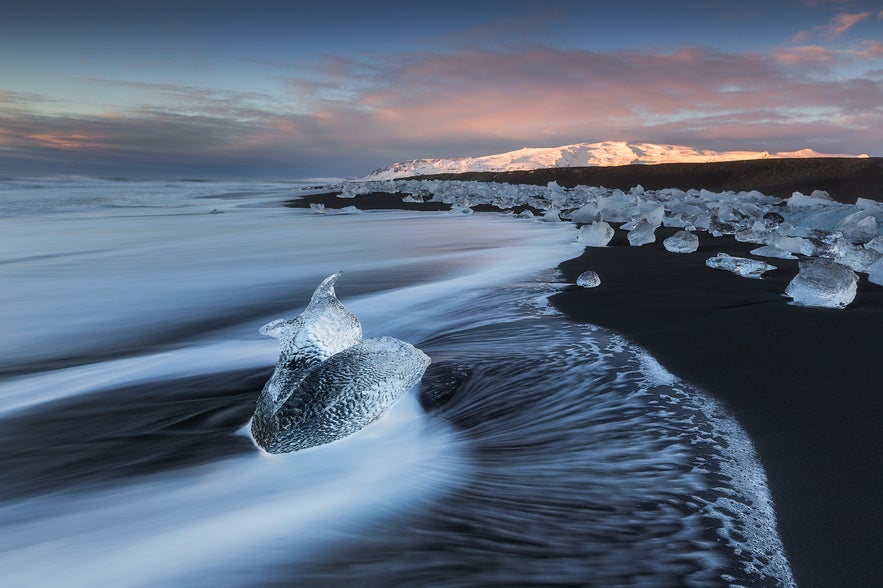 Just a five-minute walk from the lagoon itself, visitors will discover Diamond Beach. Icebergs frequently wash ashore on this aptly named stretch of coast. The glittering icebergs contrast with the jet-black sand, resulting in one of Iceland’s most visually stunning natural landscapes.
Just a five-minute walk from the lagoon itself, visitors will discover Diamond Beach. Icebergs frequently wash ashore on this aptly named stretch of coast. The glittering icebergs contrast with the jet-black sand, resulting in one of Iceland’s most visually stunning natural landscapes.
The area surrounding the glacier lagoon is excellent to spot northern lights in the winter because of the lack of light pollution. There are many great hotels near Jokulsarlon Lagoon which you can stay at and marvel at the aurora in the evening time.
4. Take a Dip in a Natural Hot Pool
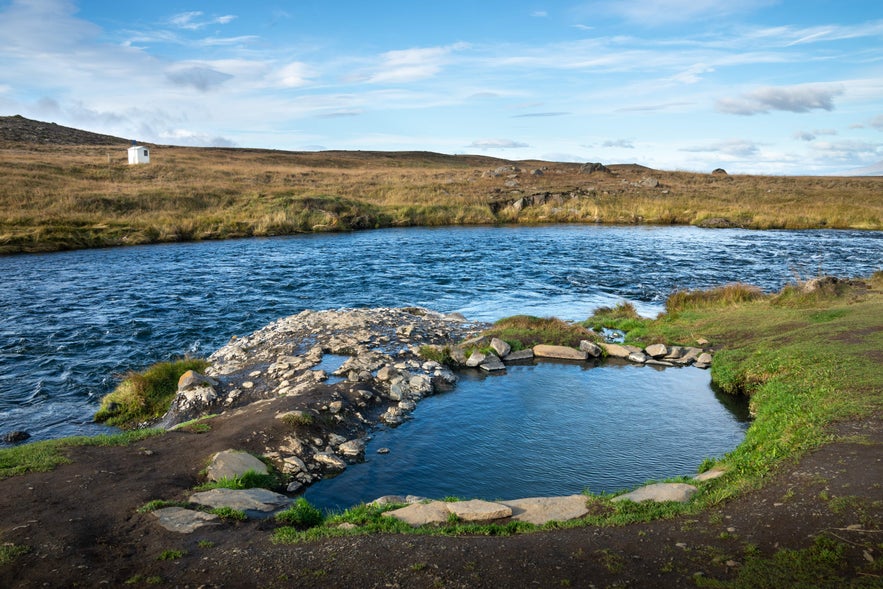
Iceland's geological activity doesn't only mean an abundance of volcanoes and earthquakes. It also means... hot springs!
Iceland is a young land mass, being only a few million years old, meaning much of the landscape is still alive, so to speak. One of the incredible byproducts of living in a geothermally active area is the abundance of hot pools around the country, both those that are out in nature and the many hot spring spas you can visit, making it a must-do activity in Iceland!
While the Blue Lagoon is the most famous hot spring spa in Iceland, there are many more around the country. Just a short drive from Reykjavik, you can visit the Hvammsvik Hot Springs, with an amazing view of the nearby coastline. If you're traveling in the north, take a dip in the Earth Lagoon, or if you're in Akureyri, visit the serene Forest Lagoon with its lush surroundings and view of the mountains.
You can check out the wide variety of hot spring tours in Iceland and explore all the different hot springs around the country you can visit, including both natural hot springs and hot spring spas. Taking a dip into these geothermal hot pools is also an excellent way to kick back and have a friendly chat with fellow bathers. You could even view the northern lights from the hot spring when conditions are right. How amazing is that!
- See also: The 30 Best Hot Springs in Iceland
3. Tour the Golden Circle and Go Snowmobiling or Snorkeling
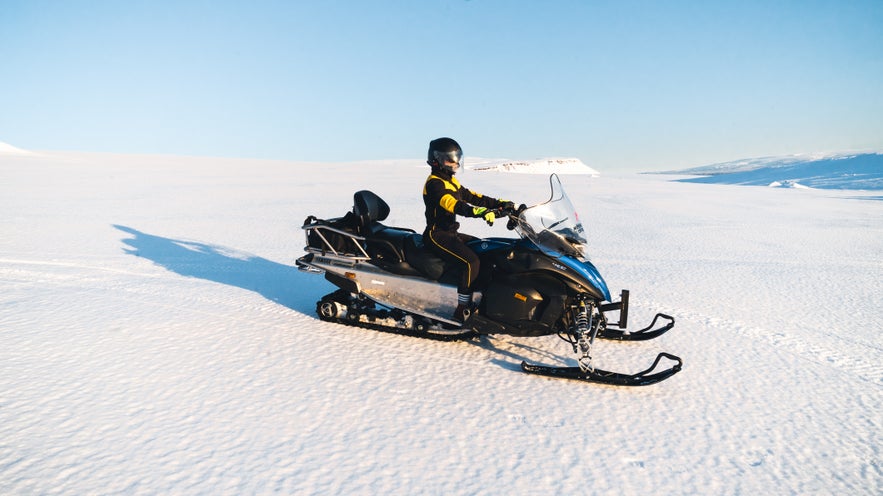 The Golden Circle is Iceland’s most popular sightseeing route, making it a top activity for those visiting the country. It comprises three major attractions: The historic Thingvellir National Park, the highly active Geysir Geothermal Area, and the majestic Gullfoss waterfall. These are some of the best things to see in Iceland, and they are easily accessible as they are close to the capital city of Reykjavik.
The Golden Circle is Iceland’s most popular sightseeing route, making it a top activity for those visiting the country. It comprises three major attractions: The historic Thingvellir National Park, the highly active Geysir Geothermal Area, and the majestic Gullfoss waterfall. These are some of the best things to see in Iceland, and they are easily accessible as they are close to the capital city of Reykjavik.
You can drive the Golden Circle in a few hours, making time for other activities for the rest of the day. Others opt to spread out the drive over a whole day, making time for snorkeling tours and snowmobile tours for extra excitement.
Thingvellir National Park is important to Icelanders for many reasons. Its natural beauty is unique as it is where the tectonic plates of North America and Eurasia are drifting apart. That creates a dramatic landscape of moss-covered lava fields, deep gorges, and waterfalls.
It also has historical significance as Althingi, the oldest working national assembly in the world, was established at Thingvellir in 930 AD. Additionally, it was where Iceland's declaration of independence was formally signed in 1944.
At Thingvellir, you will also find Silfra Fissure, one of the top 10 snorkeling spots in the world.
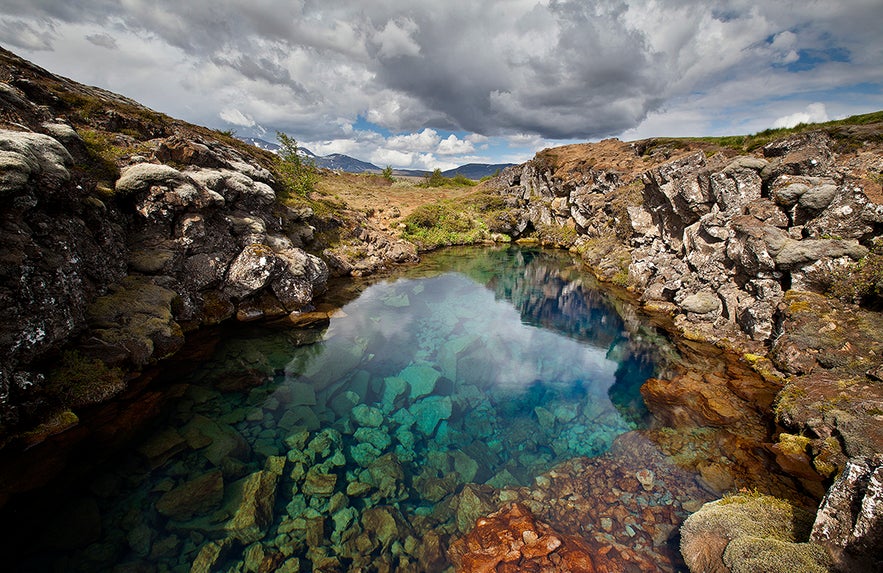 Haukadalur is home to the hot springs, Geysir and Strokkur, the latter of which erupts to over 65 feet (20 meters) in the air every five minutes or so and is surrounded by numerous steaming fumaroles and bubbling mud pools.
Haukadalur is home to the hot springs, Geysir and Strokkur, the latter of which erupts to over 65 feet (20 meters) in the air every five minutes or so and is surrounded by numerous steaming fumaroles and bubbling mud pools.
Six miles (10 kilometers) to the north, you will find the third and final stop on the Golden Circle, the Gullfoss waterfall. This 105-foot (32-meter) high is called the "Golden Falls" for a reason, as it cascades over two rocky tiers and into a dramatic valley below. On a sunny day, you will find a rainbow crowned above it, making the view extra special.
Guests who visit this majestic waterfall can choose to partake in a snowmobile tour from Gullfoss on Iceland’s second-largest glacier, Langjokull. It's an amazing feeling to glide across the snowy surface of a glacier with a white horizon in every direction, and should not be missed!
If you'd like to stay near the sightseeing route, you can book a hotel close to the Golden Circle and enjoy the beautiful surroundings as you wake up in the morning.
2. Witness the Northern Lights
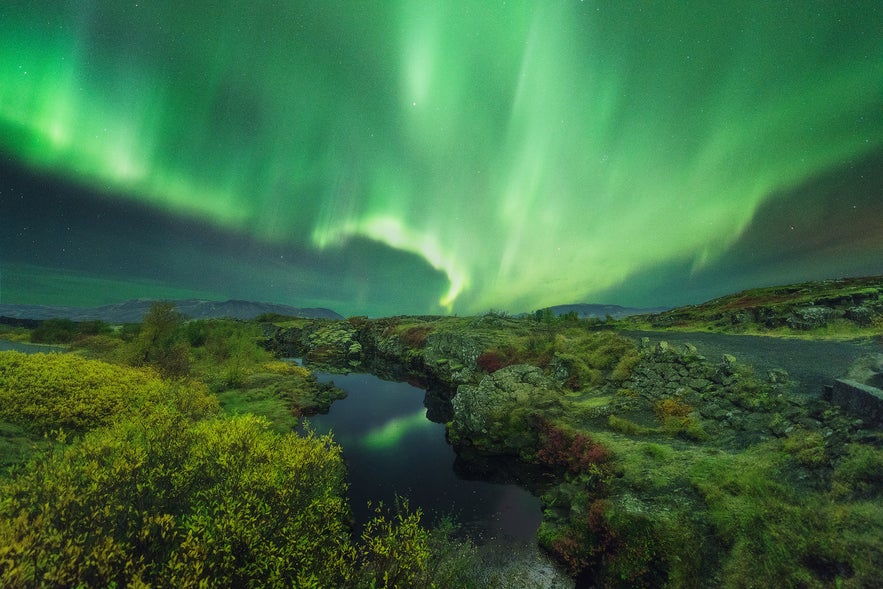
One of Iceland’s biggest draws is the northern lights, otherwise known as the aurora borealis. This natural light display can only be seen in winter and only in the Earth’s northernmost areas. This incredible phenomenon, dancing in ribbon-like waves of purple, green, and gold, must be experienced at least once in a lifetime.
The northern lights are infamously elusive. To see them, conditions must be ideal, with limited or no cloud cover, solar activity in the magnetosphere, and no light pollution. It's advisable to check the aurora forecast in Iceland, before deciding to go aurora hunting to make sure the conditions are good. The strength of the lights depends on the activity on the surface of the sun, which goes through 11-year cycles. Fortunately, the solar maximum has been reached in the year 2025, making it a particularly good year to see the aurora!
When they do appear, there’s no knowing exactly when, where, or how long the lights will dance in the sky. But that’s part of what makes them a must-see in Iceland. Thankfully, there are handy steps you can take to maximize your chances of seeing them.
The most convenient way to see this natural phenomenon is to take a guided northern lights tour with a local expert who knows the best locations for great visibility. They can also provide a wealth of scientific information to add even more color to the experience.
If you prefer to go look for these lights on your own, you can rent a car in Iceland and drive to a location away from the light pollution in Reykjavik. More remote rural areas will have better visibility than the city. Then be patient! While you can’t control the weather, you can do your best to be ready if the conditions are right.
1. Step Inside an Ice Cave
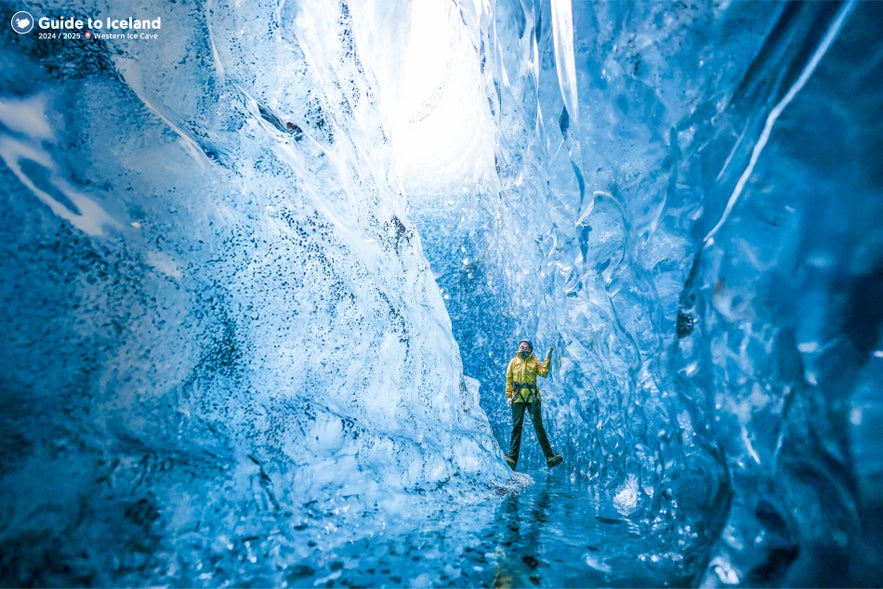 As its name suggests, Iceland is a land defined by frozen landscapes. While some think Iceland is not quite frozen enough to warrant the name (compared to Greenland), it's still a country of floating icebergs, sweeping glaciers, and dazzling blue ice caves.
As its name suggests, Iceland is a land defined by frozen landscapes. While some think Iceland is not quite frozen enough to warrant the name (compared to Greenland), it's still a country of floating icebergs, sweeping glaciers, and dazzling blue ice caves.
During the winter, Iceland truly lives up to its name. It’s an environment perpetually trapped between darkness and glittering white snow. There are many cool things to do in Iceland - literally and figuratively!
The ultimate activity to engage in during the winter is exploring the ice caves in Iceland by stepping inside a massive glacier and seeing the amazing patterns of icy walls and how it's been naturally carved out by my glacial meltwater. It's truly an experience you won't forget!
- Learn more: The Ultimate Guide to Ice Caves in Iceland
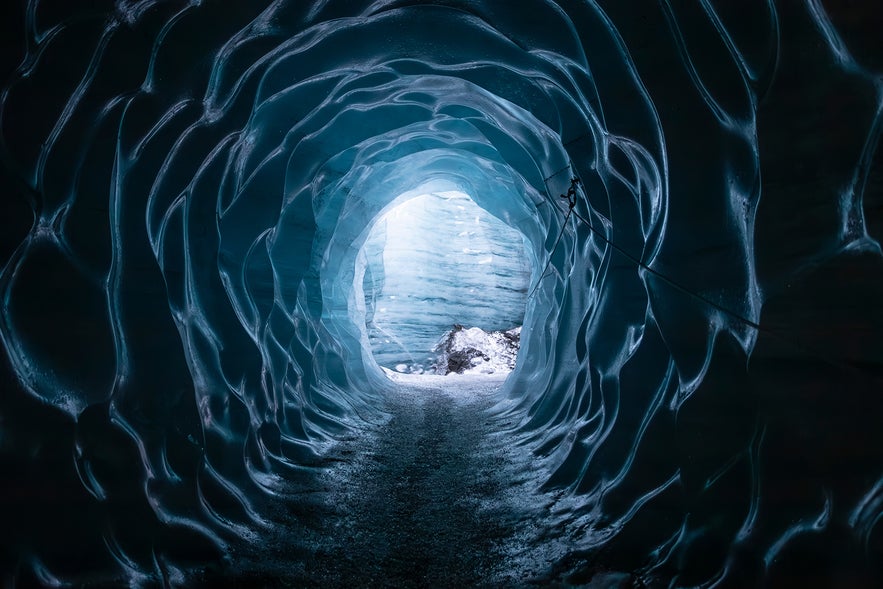 Currently, the two best options for visiting an ice cave in Iceland are the Western Ice Cave and Eastern Ice Cave within Vatnajokull glacier, the largest glacier in Europe. By going on the exclusive Crystal Blue Ice Cave Tour, visitors will be taken to one of the two of these breathtaking ice caves, depending on which one has the best conditions for accessibility and visibility each day.
Currently, the two best options for visiting an ice cave in Iceland are the Western Ice Cave and Eastern Ice Cave within Vatnajokull glacier, the largest glacier in Europe. By going on the exclusive Crystal Blue Ice Cave Tour, visitors will be taken to one of the two of these breathtaking ice caves, depending on which one has the best conditions for accessibility and visibility each day.
The Western Ice Cave has light-blue walls, which create a magical atmosphere when you step into it, making it feel like you're inside a shiny diamond. To reach it, you will need to go on a monster truck to get you across the glacier, which is an experience in itself! But once you get there, it will all be worth it.
The Eastern Ice Cave is larger and more accessible, making you appreciate the sheer depth and size of this natural wonder. While visiting this ice cave, it's hard to believe that you're literally walking around inside a glacier, making it a truly otherworldly experience and something that's truly an Icelandic activity you can't do anywhere else.
Did you enjoy our choices for the top 12 activities in Iceland? Did it help you choose what to do in Iceland? Feel free to leave your thoughts and queries in the comments below.

